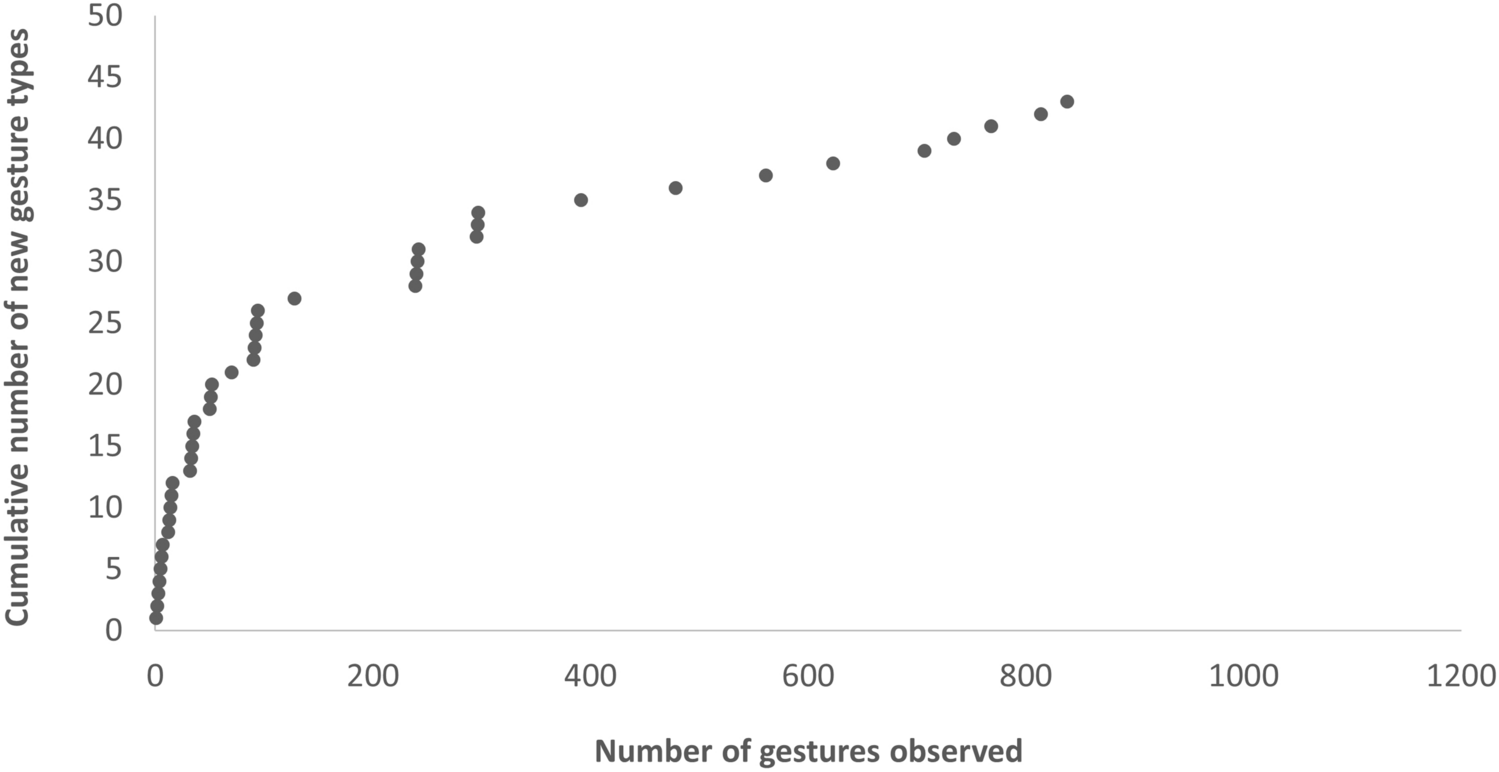4
Gestures play a central role in the communication systems of several animal families, including primates. In this study, we provide a first assessment of the gestural systems of a Platyrrhine species, Geoffroy’s spider monkeys (Ateles geoffroyi). We observed a wild group of 52 spider monkeys and assessed the distribution of visual and tactile gestures in the group, the size of individual repertoires and the intentionality and effectiveness of individuals’ gestural production. Our results showed that younger spider monkeys were more likely than older ones to use tactile gestures. In contrast, we found no inter-individual differences in the probability of producing visual gestures. Repertoire size did not vary with age, but the probability of accounting for recipients’ attentional state was higher for older monkeys than for younger ones, especially for gestures in the visual modality. Using vocalizations right before the gesture increased the probability of gesturing towards attentive recipients and of receiving a response, although age had no effect on the probability of gestures being responded. Overall, our study provides first evidence of gestural production in a Platyrrhine species, and confirms this taxon as a valid candidate for research on animal communication.



Summary made by Fabric’s Wisdom Extractor
SUMMARY
Felipe Villa-Larenas, Miquel Llorente, Katja Liebal, and Federica Amici’s study explores gestural communication in wild Geoffroy’s spider monkeys (Ateles geoffroyi), focusing on the use of visual and tactile gestures, the influence of age on gesture use, the intentionality behind gestures, and their effectiveness in communication.
IDEAS:
QUOTES:
FACTS:
REFERENCES:
RECOMMENDATIONS: